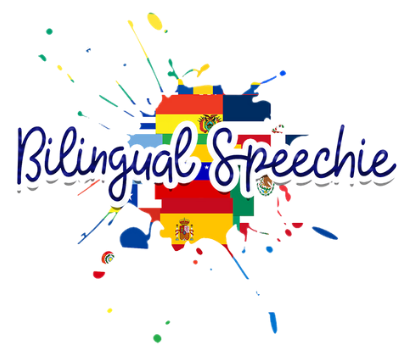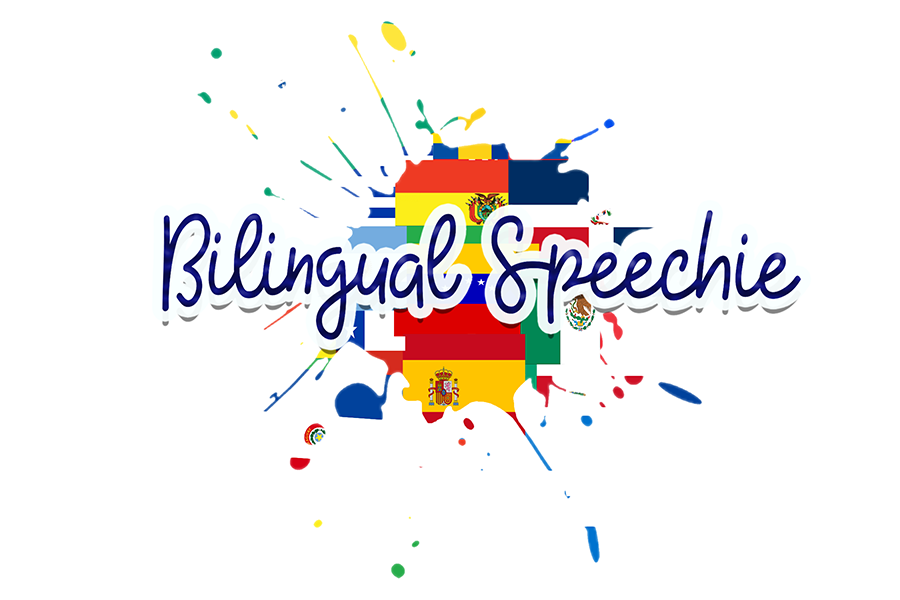by Liliana Diaz August 03, 2019
These are some of the top common myths that I have heard over the years while working with the bilingual population. Most of these myths I have heard from parents and/or professionals such as doctors or other SLPs who may not be necessarily informed about the best and current practices when working with linguistically diverse and bilingual populations.
Myth #1 Exposing infants or toddlers to more than one language will cause delays.
There is no research to support the idea that bilingualism causes language delays. It is important to understand that developmental milestones are the same across all languages, races and cultures. For example, most children will say their first word by the age of one and this standard can be held for bilingual children. When working with bilingual children, one must account for both languages. If you are concerned that your bilingual child might be have a language delay, take into account his/her vocabulary in both languages and count the total number of words he/she has in both languages. Once you obtain this information, it can comparable to that of a child speaking one language and can provide you with insight about the child’s vocabulary acquisition.
Myth #2 – Bilingualism causes language delays
Several research studies have determined that bilingualism does not cause language delays. Dr. Barbara T. Conboy, who is a SLP with specialty training in early language and bilingualism, has completed research in the area of language differentiation in bilingual infants. Findings suggest that children’s cognitive systems, as early as infancy, can handle more than one language without confusion. Studies have also suggested that bilingual infants can also demonstrate phonetic categorization skills similar to monolingual infants, but have also suggested that bilingual infants demonstrate highly developed decoding because they are able to handle and distinguish between two separate language codes at birth.
Myth #3 When children mix their languages it means that they are confused.
Code-Mixing is the use of elements from two or more languages in the same utterance or conversation. Parents and educators should not reprimand children for code-mixing because code-mixing is pragmatically strategic and grammatically constrained, meaning that it does not occur randomly. Code-mixing is rule-governed and often people who code-mix do it in a way that respects the grammatical rules of both languages. Code-mixing is complex and can fill the gaps in a child’s proficiency in the target language. In some cultures, code-mixing may reflect the child’s cultural identity.
Myth #4 Speaking two languages to a child with a language disorder will make them worse
Often parents of children who have autism, developmental delays or other disorders worry that speaking two languages might delay their child’s language development even more or altogether stop it. There is a growing body of research indicating that children with a wide range of communication disorders are capable of becoming bilingual. There have been several studies completed on children with Down Syndrome, articulation impairments and autism which have suggested that bilingual children’s language skills can be comparable to monolingual children with the same impairments. Hambly & Fombonne (2011) completed a study that compared the social language abilities of three groups of children with autism spectrum disorder (ASD) from Quebec and Ontario. The researchers examined several language aspects such as social responsiveness, initiation of and response to pointing, attention to voice, vocabulary size, acquisition of first words, and phrases. Findings suggested that children with ASD who were simultaneous bilinguals did not experience additional language development delays. In addition, results also indicated that the timing of the bilingual exposure did not affect the child’s language abilities but more importantly, the findings suggested that children who have autism are capable of becoming bilingual.
Myth #5 Bilingual children will have academic difficulties Research shows that bilingual children can have academic advantages of being bilingual including superior problem-solving skills, multi-tasking skills as well as increased cognitive flexibility. In addition, maintaining a child’s home language or promoting bilingualism can have advantages such as increased home communication, biliteracy, and success in the future with job attainment. It is important to remember that eliminating a child’s home language can result in poor language models at home, difficulty with family cohesion/communication and prevent families from passing on their cultural values.
Comments will be approved before showing up.
by Liliana Diaz September 26, 2025
When parents hear the word “stuttering,” it can bring up worry or fear about their child’s future. For many years, stuttering was viewed only as a “problem to fix.” But today, new research and approaches help us see stuttering in a different, more affirming way—one that celebrates communication in all its forms and embraces verbal diversity.
by Liliana Diaz September 26, 2025
As parents, it’s natural to notice how your child talks and to wonder whether their speech is developing as expected. If your child is hard to understand or struggles to say certain sounds, you may have heard the term “speech sound disorder.” But what does that mean? Let’s break it down together.
by Liliana Diaz September 26, 2025
As parents, we celebrate every new word, every little sound, and every funny phrase our children come up with. But sometimes, you may find yourself wondering: “Should my child be talking more by now?” or “Is this a sign of a speech delay?”

Who are we?
Bilingual Speechie LLC. is a small business dedicated to providing inclusive and engaging speech therapy resources and activities for bilingual children, parents, SLPs and educators.
Bilingual Speechie LLC promotes bilingualism and multilingualism by dispelling common myths, providing education on bilingual language development, and promoting heritage language maintenance amongst bilingual families.
About the Owner:
Liliana Diaz-Vazquez is a certified licensed bilingual speech language pathologist (SLP), currently practicing in Chicago, Illinois. She obtained her bachelor’s degree in communication disorders (2012) and her master’s degree in speech language pathology at Saint Xavier University (2014). She is a certified member of the American Speech-Language and Hearing Association (ASHA) since 2014, a member of the Illinois Speech and Hearing Association (ISHA) since 2014 and maintains licensure in the state of Illinois.
Liliana is a first-generation Mexican-American Latina, a small business owner, a full-time school-based SLP, & a bilingual parent, who takes pride in her roots, culture, & heritage language. She loves being able to share her experience as a Latina SLP, and a bilingual mom, as well as her culture & heritage language with the educator, SLP, and parent community.
Liliana Diaz-Vazquez has extensive experience working with the bilingual English and Spanish speaking population & multilingual population. She specializes in augmentative/alternative communication (AAC), bilingual language development and language delays/disorders in bilingual/multilingual children. She has also worked in the early intervention setting for several years where she gained vast experience working with interpreters and bilingual/multilingual families.
Liliana began creating digital bilingual resources and activities in 2014 out of need while working full-time in the school setting as a SLP. Liliana worked with many Spanish-speaking families and quickly realized that there were limited Spanish and bilingual speech therapy resources available for her students and their families. In addition, Liliana quickly became aware that there was a need for education about bilingualism and typical bilingual language development as many of the families she worked with had encountered misinformation about bilingualism. Liliana began developing resources and eventually started Bilingual Speechie LLC with the mission to provide education to SLPs and families about bilingualism, as well as provide inclusive and diverse materials for speech therapy in order to help bilingual families and SLPs gain access to appropriate bilingual materials for children with communication disorders.
Today Liliana currently works full-time in the Chicago public school setting as a lead bilingual SLP where she consults and collaborates with SLPs daily to help them understand how to assess and provide culturally and linguistically appropriate services for bilingual and/or multilingual students. She also runs her small business, Bilingual Speechie LLC, and is on a mission to expand and grow her business so that all SLPs, educators, and families can have access to inclusive, diverse, and bilingual resources in a variety of languages for speech therapy.
Professional Development:
Liliana has vast experience as a speaker/presenter and has presented at several conferences over the years. You can view all previous conferences and topics that Liliana has presented on here. Liliana is available to present on topics such as best practices when working with multilingual populations, bilingual speech/language assessment and treatment, goal writing with multilingual populations and much more. If you are interested in booking Liliana for a conference or event please don't hesitate to send an email at lilianadiaz@bilingualspeechie.com
 English
en
English
en
 English
en
English
en
 Español
es
Español
es


Liliana Diaz
Author